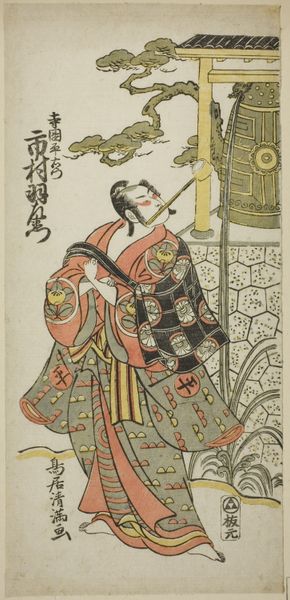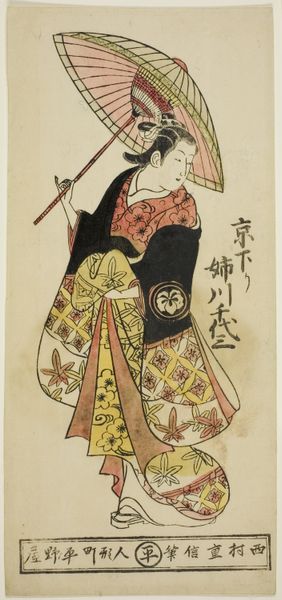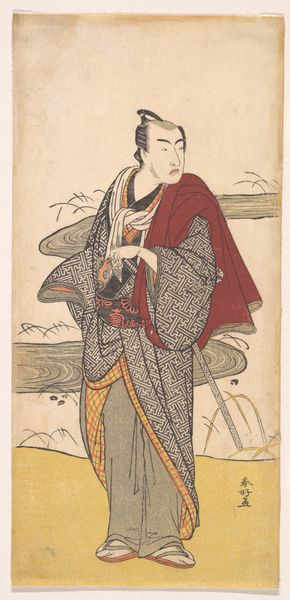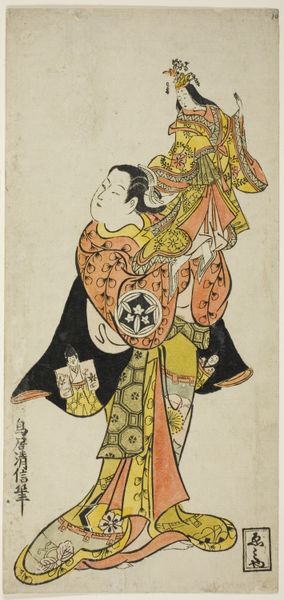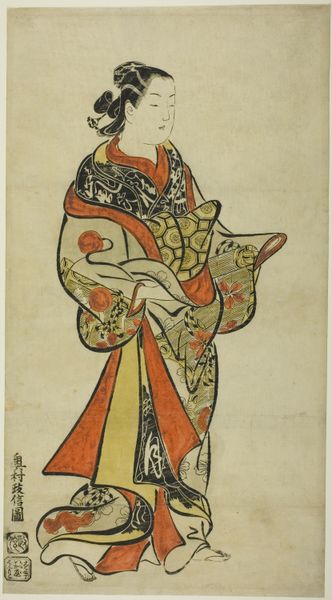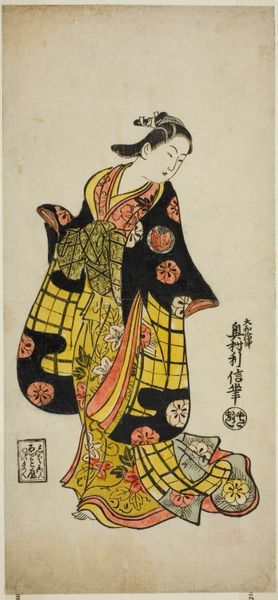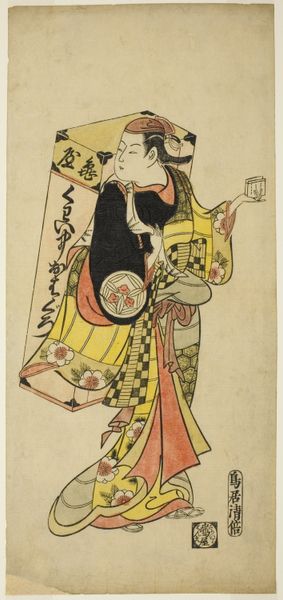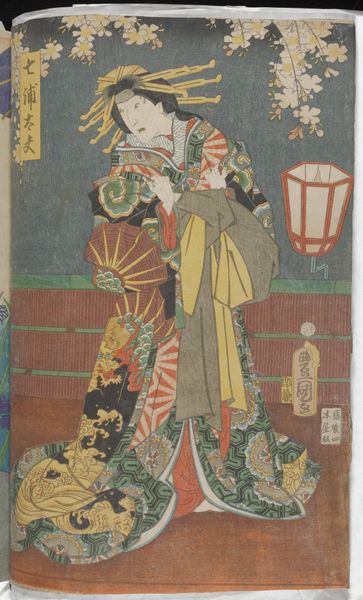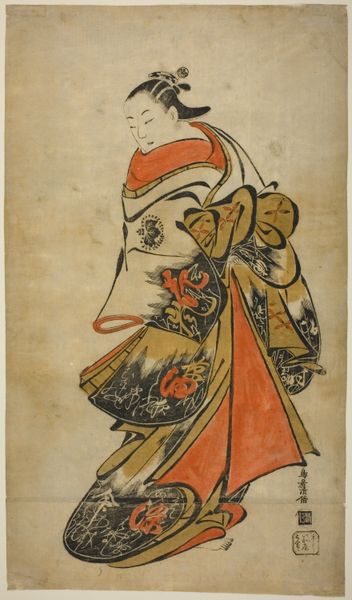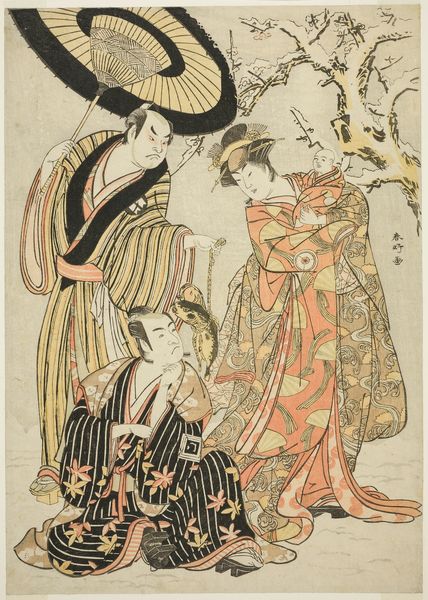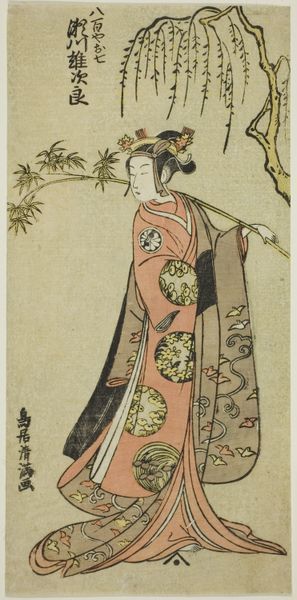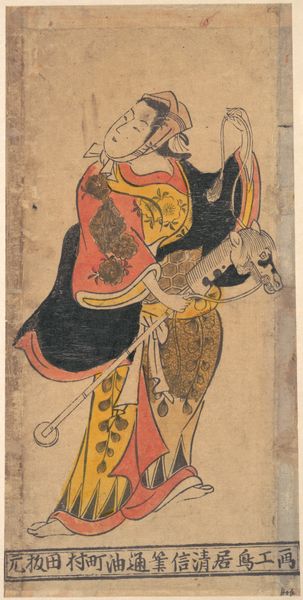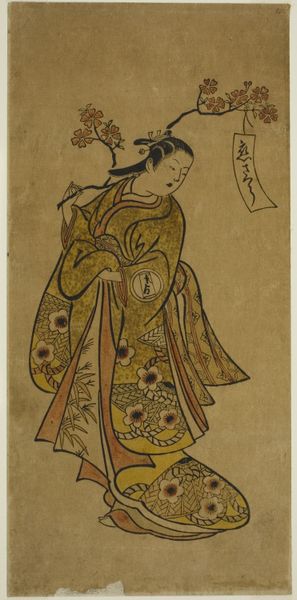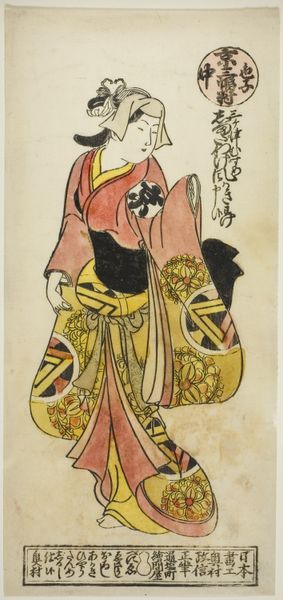
Actor Sanogawa Ichimatsu (1722–1763) as a Courtesan during the Tanabata Festival 1720 - 1740
0:00
0:00
Dimensions: H. 12 7/16 in. (31.6 cm); W. 6 in. (15.2 cm)
Copyright: Public Domain
Curator: What strikes me first about this ukiyo-e print is the figure's enigmatic expression; there's a subtle emotional landscape hinted at beneath the surface. Editor: This is Actor Sanogawa Ichimatsu portrayed by Okumura Toshinobu. Dating back to the early 18th century, between 1720 and 1740, it’s entitled "Actor Sanogawa Ichimatsu (1722–1763) as a Courtesan during the Tanabata Festival." As a woodblock print rendered on toned paper, it gives us insight into Kabuki theater's representation of women. Curator: The print's tones are incredibly muted, and even melancholic given it captures what I think is supposed to be the vibrant Tanabata Festival? The stylized details though…those geometric kimono patterns—it makes you consider its visual vocabulary as a language itself, right? What meanings might that reveal? Editor: Exactly! The actor's role as a courtesan during the festival is charged. In Japanese society, gender was not always understood through our modern binaries, which this artwork complicates. And the festival itself – the meeting of Orihime and Hikoboshi, celestial lovers – is about transcending earthly limitations. The maple leaf motif and even the lantern connect to layered symbolic interpretations, including mortality. Curator: Speaking of limitations, I'm intrigued by that flat perspective characteristic of ukiyo-e. It feels so intentional—almost like a rejection of Western artistic traditions of the period. What does that visual choice signify in its cultural context? Editor: Well, Toshinobu’s decision challenges any Western conceptions of depth, emphasizing the symbolic and the performative. Kabuki theatre wasn't merely entertainment; it functioned as social commentary, often skirting censorship and playing with societal norms. These "actor portraits," or yakusha-e, essentially broadcasted images of the elite as approachable people to wider society, blurring class boundaries via art. Curator: I appreciate this so much! I began with a gut reaction to this work, but you gave this piece new levels of historical complexity I wouldn’t have arrived at myself. Editor: I am glad, together, we were able to dive beneath the surface of what seems like a fairly simple image. To witness the fascinating contradictions within one person. It holds multitudes that, frankly, mirror those of society as a whole.
Comments
No comments
Be the first to comment and join the conversation on the ultimate creative platform.
